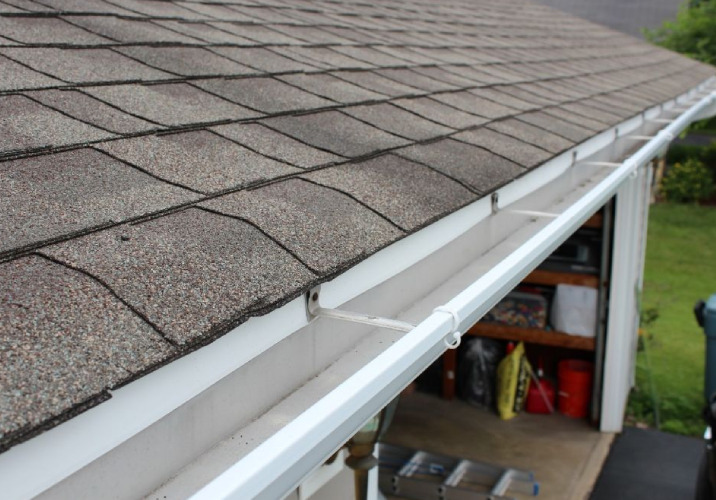
Find a local guttering expert
- Inspiration /
- Outdoor projects /
- Roofing /
- How to install guttering
How to install guttering
How to know if your gutters need repairing or replacing
Gutters channel the water away from your home so that it does not cause damage to your foundation or walls. If your gutters are clogged or need to be replaced, they can end up costing you more in repairs in the long run. You might think that repairing or replacing your guttering yourself is a good option, but this is one project where you can get into more than you imagined, so it might be a good idea to hire a professional. If you decide to do it yourself, here is what you can expect.
How do you know if your gutters need repairing or replacing?
One of the biggest things that you might be wondering is if you need guttering replacement or whether someone can repair it. The first thing you need to do is determine if your gutters are clogged and require cleaning out. Whether they need to be repaired or replaced, cleaning them is the first step. If you clean your guttering and you find that you still have water leaking from them in a few places, then you might be able to repair it with silicone sealant. If your guttering is corroded, hanging loose, or pulling away from the roof, then it might be time for a replacement.
The guttering price depends on the type of guttering that you choose and how much you need. Continuous guttering is a popular choice because it comes in various shapes and has a seamless look. If you select this type of guttering, it is also more challenging to install correctly. The average cost for guttering is between $30 to $160 per metre. PVC is the least expensive, with stainless steel being the most costly type.
Can I install gutters myself?
It is technically possible to install guttering yourself, but you must be licenced to carry out this work in many parts of Australia. Any guttering work that involves drainage work might require a plumber’s licence. Replacing gutters in many parts of Australia is considered a licenced trade. Once the job has been complete, you will often need a compliance certificate for your home records. This means that you are not allowed to do the job yourself, and we do not recommend it. The information in this article is for information only.

Materials and tools
If you decide to install your gutters despite local regulations, here are a few things that you will need.
Materials:
- Guttering material
- Gutter flashing
- Hanging straps
- Elbows
- Downspouts
- Rivets
- Hex head screws
- Self-tapping hex head screws
- Sealant approved for outdoor use
Tools:
- Cordless drill
- Crimping tool
- Duckbill tin snips
- Hex head driver
- Offset tin snips
- Pop rivet gun
- Spirit level
- Pencil
- Appropriate ladder
How to install gutters
Now that you know what you need, it is time to discuss the process. The exact procedure depends on the style of your home. Here are the general steps of the process.
- Plans and sketches: The first thing you need to do is draw a sketch of your house and note how much guttering you need. You will also need to know how many things like elbows, hangars, and downspouts. You will need to make a detailed plan of your guttering system.
- Remove the old guttering: The first step is to remove the old guttering. You must remove it carefully so that you do not damage the roof or walls beneath.
- Measure and cut the pieces: It is easier to measure and assemble the guttering on the ground and then install it. You will need to measure the pieces and assemble them on a large work surface. You must know how to notch the guttering properly to join pieces. It is difficult to fix any mistakes that are made in this phase. An accurate measurement can mean having to purchase more guttering and starting over.
- Assemble the pieces: Now it is time to assemble the pieces. Most pieces snap together. Use rivets to attach the sections together permanently. You must apply a sealant to the seams to make them watertight.
- Cut the downspout holes: Next, measure and cut the holes for the downspouts. This must be carried out with precision, or they will not fit properly. Rivet the downspout outlet to the gutters.
- Set the slope: Now, use a spirit level to mark the proper slope all around the fascia of the house.
- Mount the guttering: Screw the gutter to the fascia, add the gutter flashing, and attach the hangers. Attach the downspout brackets to the house, and assemble the downspout elbows. Rivet the downspouts to the brackets.
Contact local guttering experts
How to install gutter guards
Gutter guards are an excellent way to keep gutters from becoming clogged with leaves and debris. You must carefully lift the edge of the roofing up with a putty knife so that the gutter guard can be placed underneath it and snapped to the edge of the gutter on the side opposite the house. You will have to mitre the corners and make proper joins. Some guards are fastened to the fascia with screw brackets.
How to hire a gutter installer
As you can see, there is more to installing guttering than it would seem at first. Even if you were allowed to do it yourself, there are many reasons why you would not want to attempt it, especially being up on a ladder for that amount of time when you are not used to it. Here are a few questions you should ask when hiring a guttering installer.
- Are you licenced to install guttering in this state?
- What is your experience with the type of home that I have?
- What is included in the installation, such as regular cleaning or a similar offer?
How much will your job cost?
The Oneflare Cost Guide Centre is your one-stop shop to help you set your budget; from smaller tasks to larger projects.



